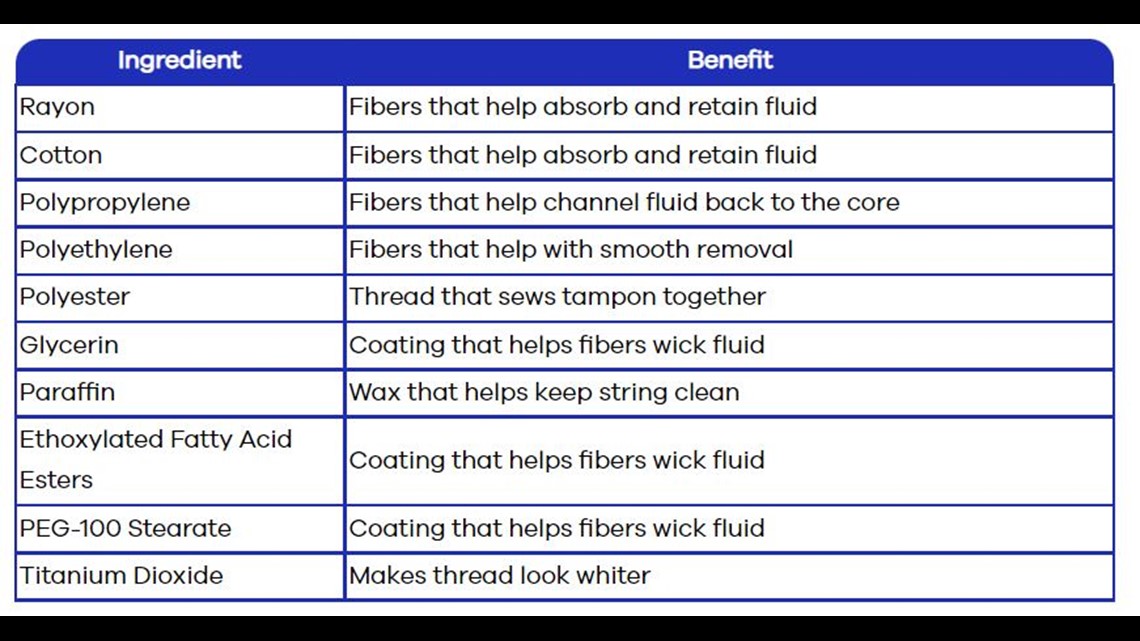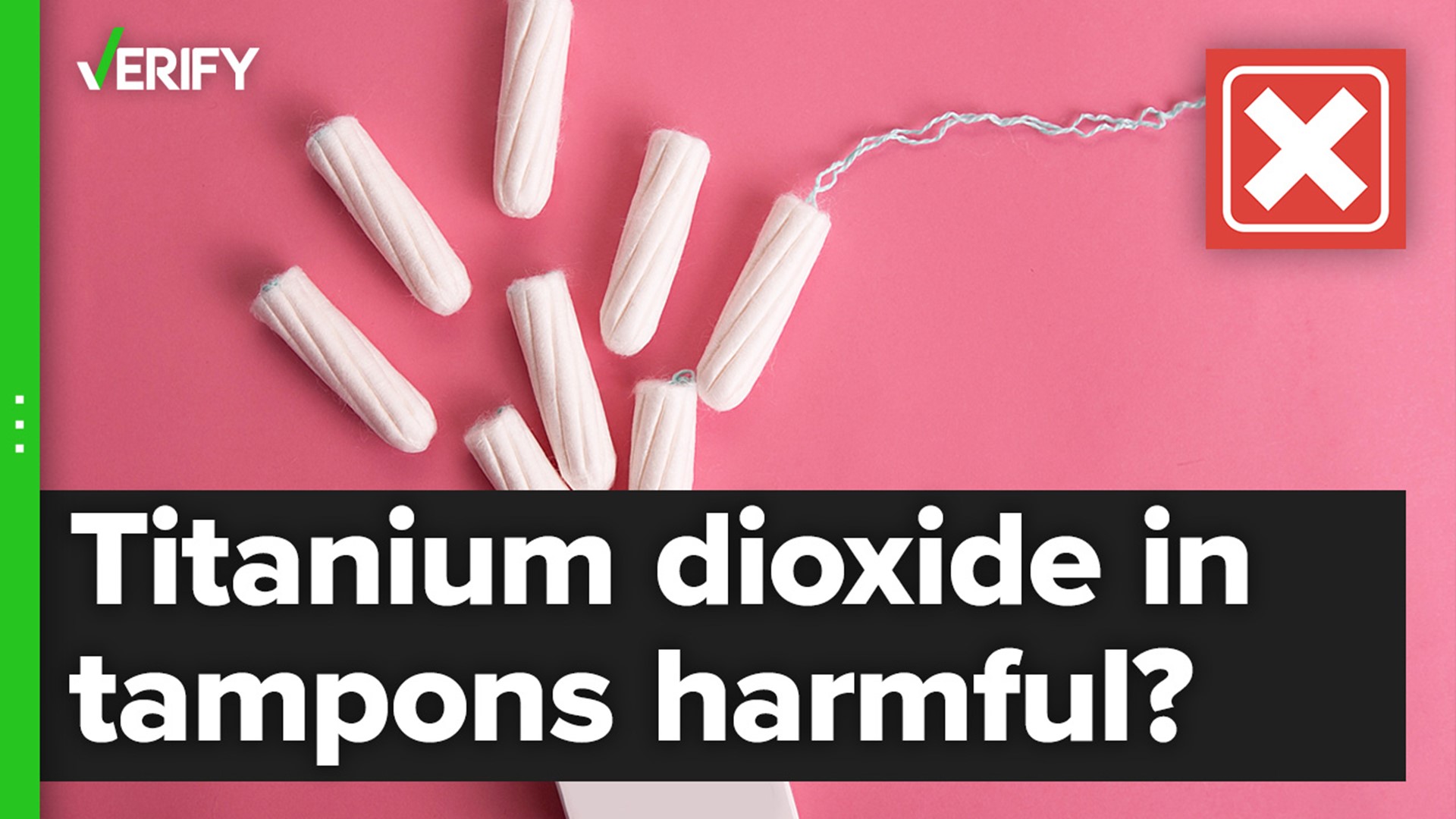Several viral videos posted to TikTok and Instagram have claimed titanium dioxide, a whitening agent, is harmful for people who use tampons.
Bobby Parrish, a social media influencer with more than 1 million followers on Instagram, said titanium dioxide is “really bad for reproductive health” and claims it can cause excessive bleeding.
THE QUESTION
Is there evidence that titanium dioxide in tampons causes reproductive harm?
THE SOURCES
- American College of Obstetricians and Gynecologists
- American Chemistry Council
- Jen Gunter, M.D., an OB/GYN and a pain medicine physician and author of The Vajenda blog
- Tampax
THE ANSWER
No, there’s no evidence titanium dioxide in tampons causes reproductive harm.
WHAT WE FOUND
Titanium dioxide is white in color and is used to enhance the color and sheen of certain foods and everyday household products, including some brands of tampons.
According to the website for Tampax, one of the major manufacturers of tampons, titanium dioxide is used to make the thread used in the product look whiter.


Gynecologist Jen Gunter, M.D., wrote on her women’s health blog that despite claims about titanium dioxide and tampons that are being shared in the viral videos, people should not be worried.
“Please don’t panic about titanium dioxide in tampon strings,” Gunter wrote on her women’s health blog, The Vajenda. “Yes, I know there are scary videos circulating on TikTok, but this is chemophobia. And it’s also awful fear mongering as I have received panicked messages from women worried their tampons caused their pre-cancer of the cervix.”
She wrote the viral videos are citing studies done on rats. In those studies, the rats were exposed to titanium dioxide for prolonged amounts of time through inhalation, and some of them developed cancerous tumors in their lungs.
Humans aren’t exposed to the titanium dioxide in tampons in the same way, and titanium dioxide doesn’t typically dissolve in water, Gunter said.
“Titanium dioxide doesn’t dissolve in water, meaning the nanoparticles aren’t going to dissolve from the tampon string and get into the blood that might be pooling in the vagina and then get absorbed by the body,” Gunter wrote. “Meaning, you don’t have to worry that the blood soaked tampon string is leaking titanium dioxide nanoparticles into your vagina. When products like titanium dioxide are put on fabric, the point is to have them stay put on that fabric through the miracle of chemistry.”
In a post about titanium dioxide on their website, the American Chemistry Council (ACC) addresses those studies conducted on rats.
The ACC says titanium dioxide has been classified as “possibly carcinogenic to humans” by The International Agency for Research on Cancer, but that determination was based on animal studies, adding “extensive studies on titanium dioxide industry workers do not suggest an association between occupational exposure to titanium dioxide and an increased risk for cancer in humans.”
The American College of Obstetricians and Gynecologists told VERIFY, “There is no evidence that suggests that any tampons are safer than any other tampons, so we do not recommend any over the others. The most important thing regarding tampon safety is not to leave them in for more than eight hours in order to reduce the risk of toxic shock syndrome.”












